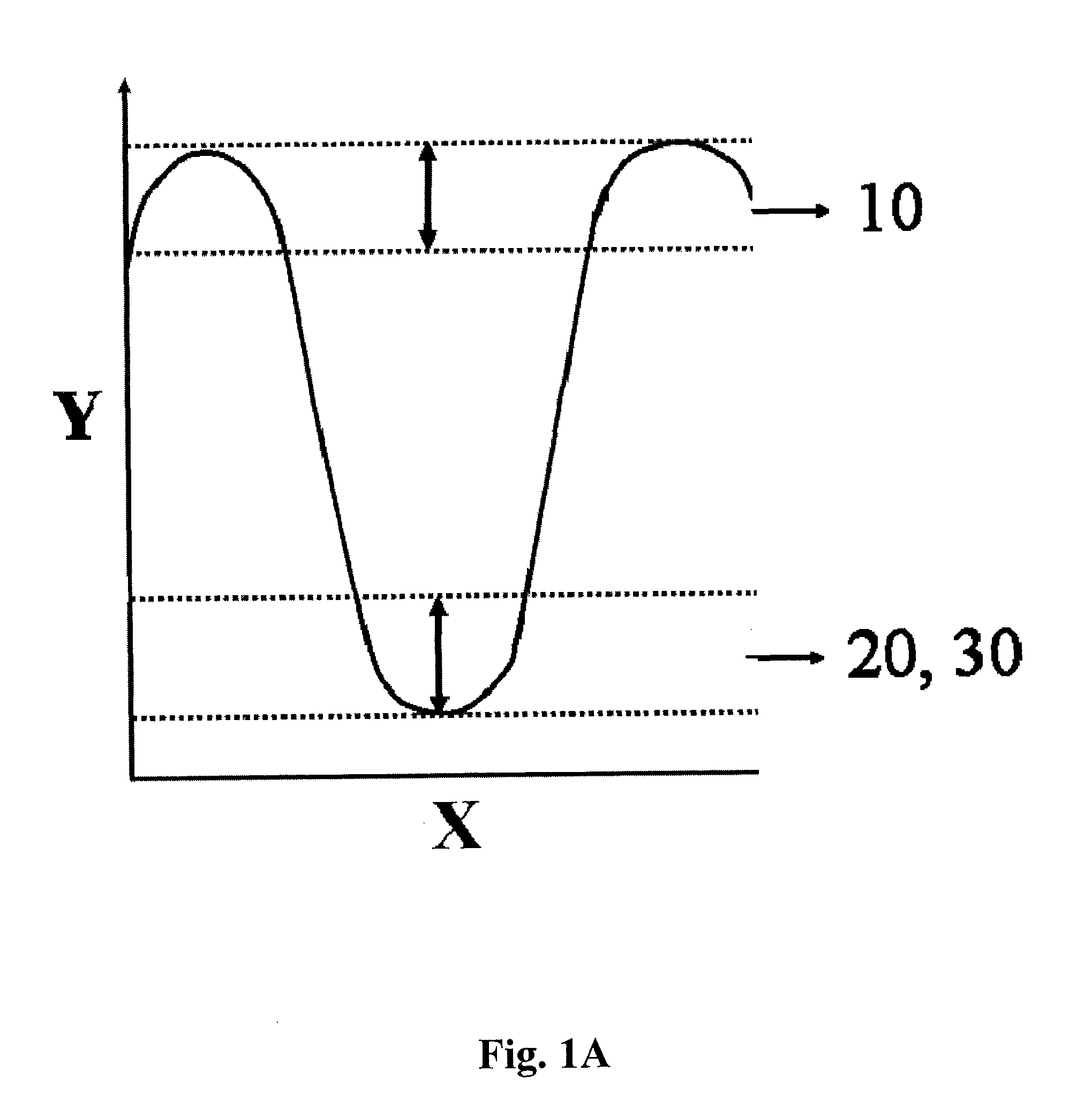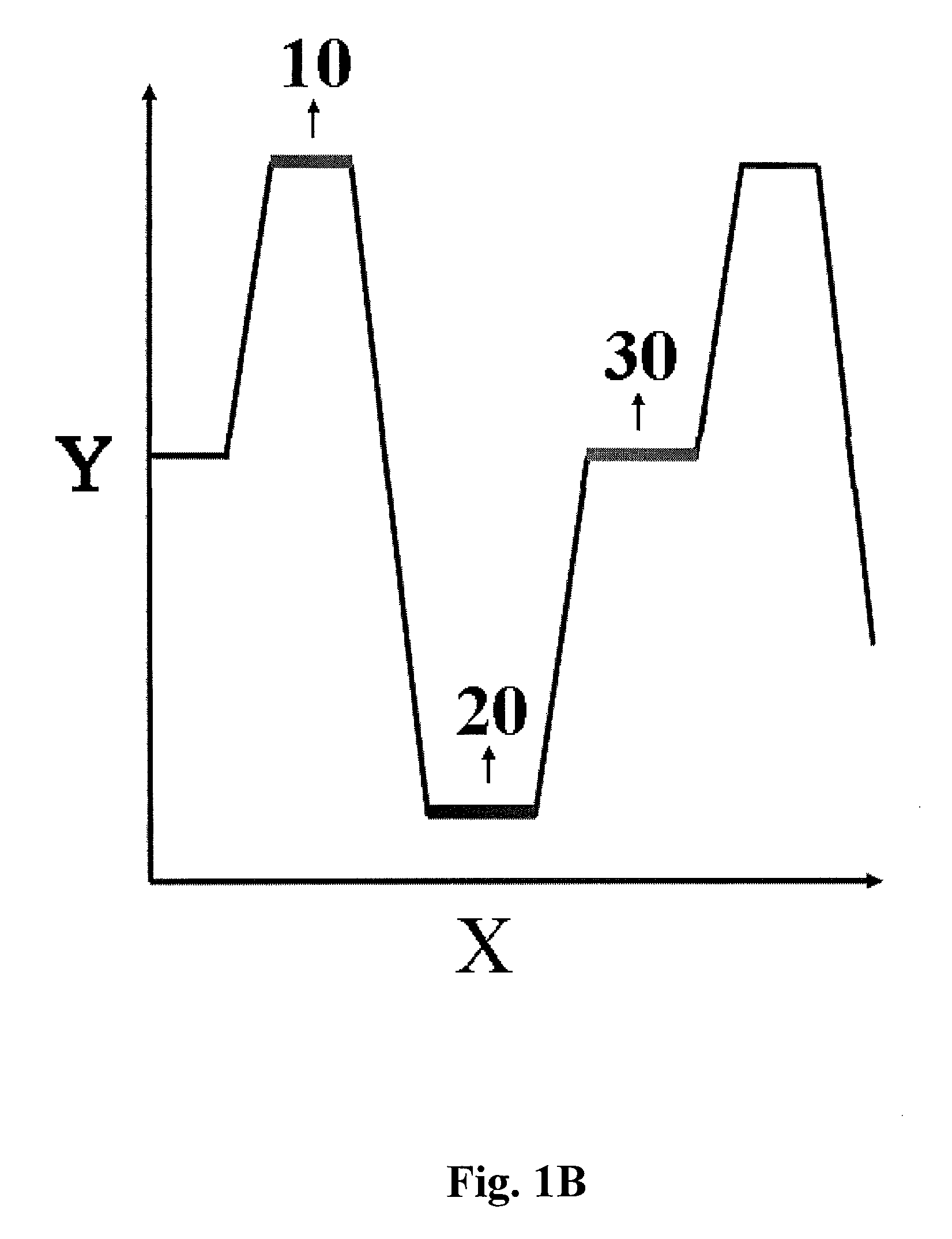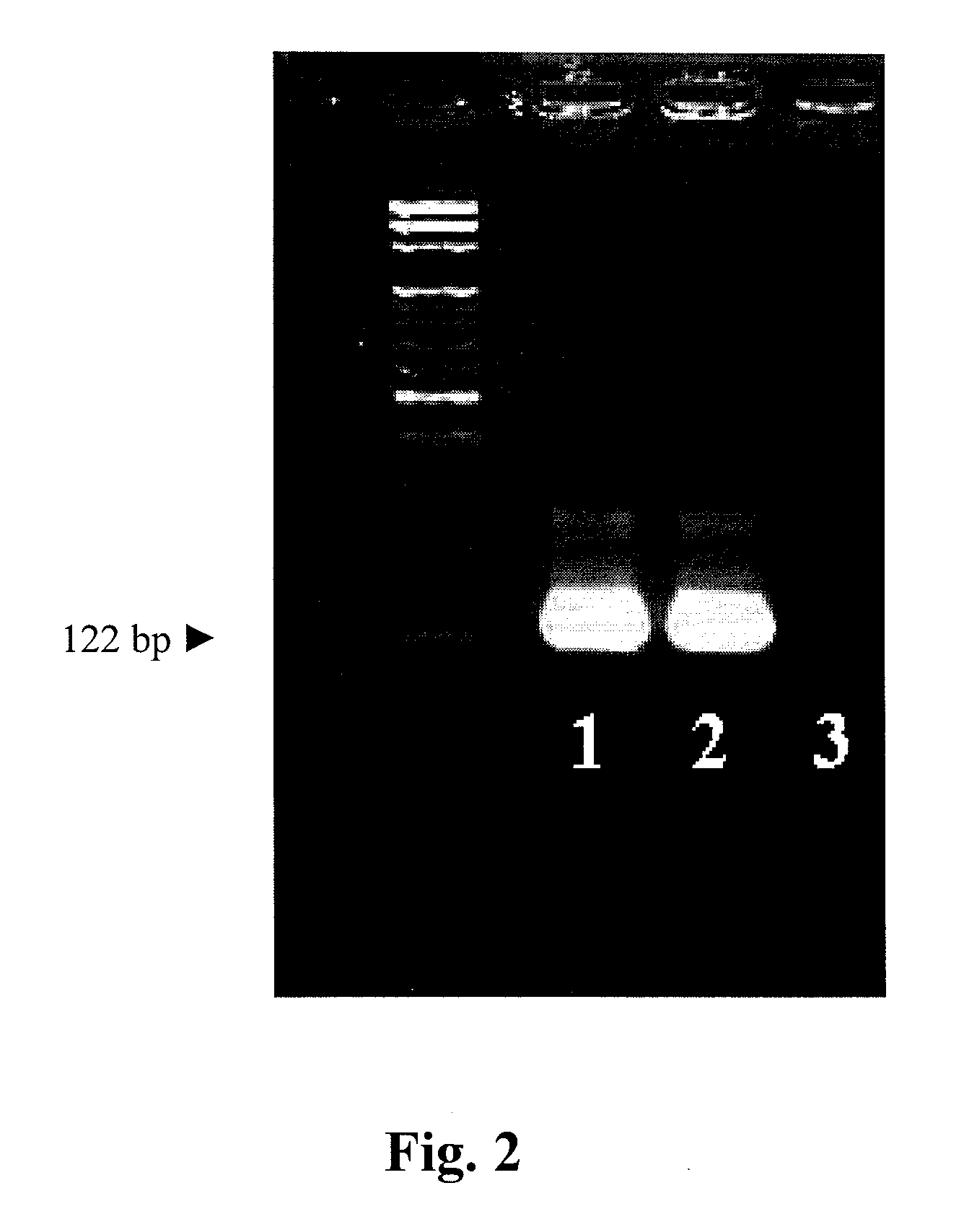Methods and apparatuses for convective polymerase chain reaction (PCR)
a polymerase chain reaction and convective technology, applied in biochemical apparatus and processes, specific use bioreactors/fermenters, after-treatment of biomass, etc., can solve the problems of inefficient process of conventional pcr thermal cycling, inconvenient operation, and high cost of thermocyclers, so as to achieve convenient, efficient and economical convective pcr
- Summary
- Abstract
- Description
- Claims
- Application Information
AI Technical Summary
Benefits of technology
Problems solved by technology
Method used
Image
Examples
example 1
1. Materials and Methods
[0043]1.1 Sample
[0044]The PCR sample contained the following reagents: 3.32 pg of pHBV-48 (GenBank accession No. NC003977) inserted in pGEM®-3Z vector (Promega Corporation, Madison, Wis.) as template DNA, 1.5 pmol of primer F118 (5′-CCTAGCAGCTTGTTTTGCTCGCAGCCG-3′), 1.5 pmol of primer R145 (5′-TCCAGTTGGCAGCACAGCCTAGCAGC-3′), 7.5 μl of LightCycler® FastStart DNA Master HybProbe hot start reaction mix (Rosche Applied Science, Indianapolis, Ind.), and 5% v / v of glycerol.
[0045]A computer simulation for simulate the abstract model of the CPRC according to the invention was conducted, and the formula for the parameters was obtained and given below:
V=(A×Ts+B−500μ+0.7)×e(1.86+100μ)d
[0046]wherein A=−0.01812, B=2.1, Ts=68° C., μ=0.0012 Ns / m2, and d=2.2 mm.
[0047]Based on the formula, the total volume of the PCR sample being 75.44 could be calculated.
[0048]1.2 Apparatus
[0049]The apparatus for performing the convective PCR according to the invention was composed of the fo...
example 2
[0053]Seven primer pairs were designed to have a melting temperature (Tm) ranging from 58° C.˜80° C. as shown in Table 1, wherein the value of Tm of each primer was calculated using the Program Lightcycler Probe Design 2.0 (Roche, Germany).
[0054]A CPCR was performed using each pair of the primers as shown in Table 1 a temperature of the PCR sample (Ts) being 68° C. according to the method and protocol stated in Example 1. The CPCR results were shown in FIG. 3, wherein the 122-bp band was found when the primer having a Tm being 70 or more than 70 w used. Given the finding, it was concluded that a CPCR could be successfully performed when the Ts value s less than the Tm value by at least about 2° C.
[0055]
TABLE 1Sequences as designed primers and Tm valuesNamemerTm(° C.)5′-HBV set 1-F3580GCGGAACTCCTAGCAGCTTGTTTTGCTCGCAGCCGHBV set 1-R3380CGCAGGATCCAGTTGGCAGCACAGCCTAGCAGCHBV set 2-F2777CCTA GCAG CTTG TTTT GCTC GCAG CCGHBV set 2-R2676TCCA GTTG GCAG CACA GCCT AGCA GCHBV set 3-F2373GCAGCTTGT...
example 3
[0056]A CPCR using each of the apparatuses with and without a holder with heat homogenizers was performed. The holder was designed for holding 96 containers arranged in a 8 (columns A-H): 12 (lines 1-12) rectangular matrix, see FIG. 4. Ten samples at 10 different positions in this matrix were selected and numbered as indicated in FIG. 5A. The CPCR results were given in FIG. 5B (without heat homogenizers) and 5C (with heat homogenizers). It was shown in FIGS. 5B and 5C that no results were found in the positions 3, 4 and 5 that were around the center of the matrix when the apparatus without heat homogenizers was used; however, while the CPCR results were good in all the positions when the apparatus with heat homogenizers were used.
[0057]A further comparison between the apparatuses with and without heat homogenizers was shown in FIG. 6. The surface temperature (Ts) of each of the PCR samples numbered as 1-10 was measured and recorded during 30-minutes after heating; and the variation ...
PUM
| Property | Measurement | Unit |
|---|---|---|
| Tm | aaaaa | aaaaa |
| melting temperature | aaaaa | aaaaa |
| surface temperature | aaaaa | aaaaa |
Abstract
Description
Claims
Application Information
 Login to View More
Login to View More - R&D
- Intellectual Property
- Life Sciences
- Materials
- Tech Scout
- Unparalleled Data Quality
- Higher Quality Content
- 60% Fewer Hallucinations
Browse by: Latest US Patents, China's latest patents, Technical Efficacy Thesaurus, Application Domain, Technology Topic, Popular Technical Reports.
© 2025 PatSnap. All rights reserved.Legal|Privacy policy|Modern Slavery Act Transparency Statement|Sitemap|About US| Contact US: help@patsnap.com



